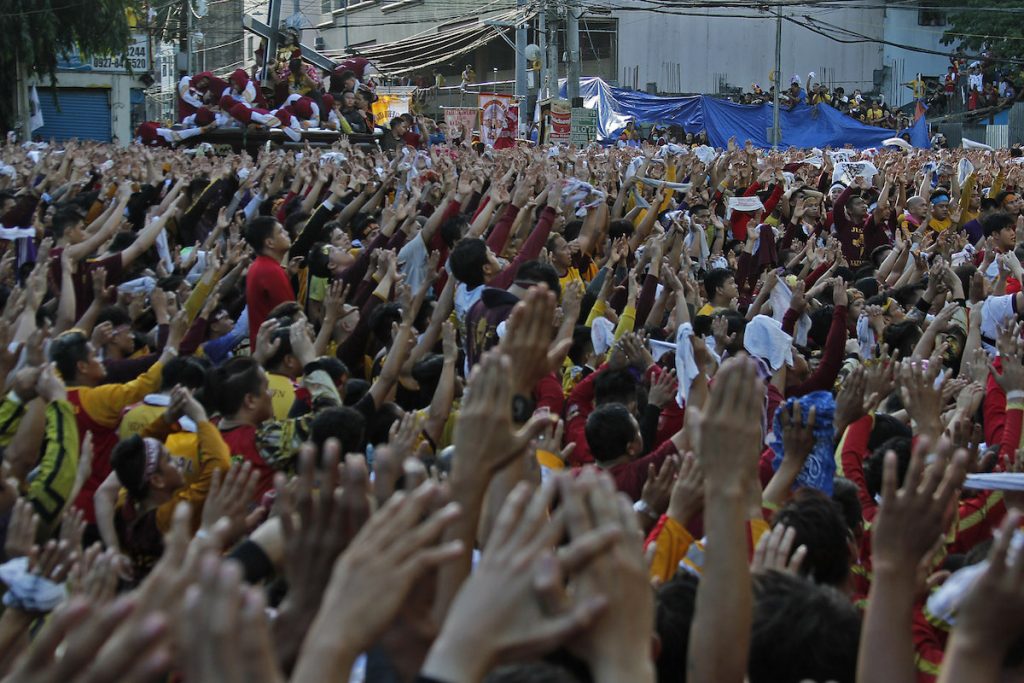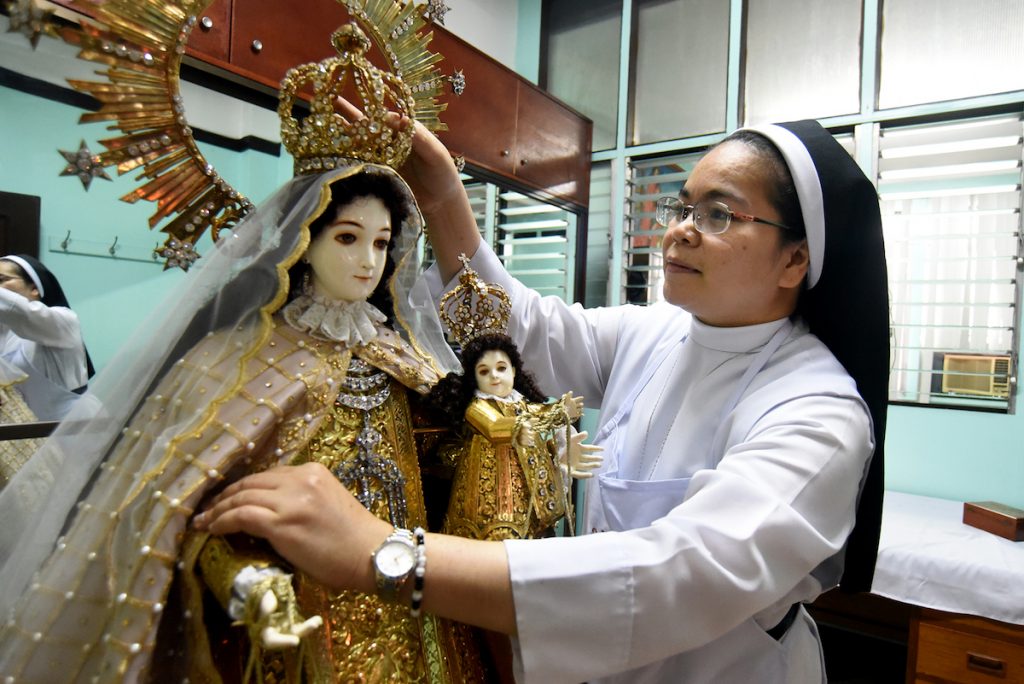The so-called feast of the Black Nazarene in Manila is a chaotic rampage of people clad in maroon and yellow who claim to believe in the mercy of a suffering God.
To touch the dark image of a kneeling Jesus carrying his cross is every devotee’s desire. They have to do all things possible, even crossing police lines, to be able to go near their patron.
This year, it took the religious procession 16 hours to finish, a record time for the annual activity that usually lasted up to 22 hours in past years.
Halfway through the route of the parade of millions of people, the procession stops. The Nazarene’s image is brought below a balcony where an image of the Our Lady of Mt. Carmel stands.
The ritual is called the “padungaw,” literally “to look down.”


Augustinian priest Rommel Rubia of the Basilica Minore de San Sebastian, where the ritual takes place, said it is a “cultural religious practice” than a liturgical one.
He said practice is distinct from the encounter between the suffering Christ and the Our Lady of Sorrows on Good Friday.
“It is a religious courtesy, a practice we inherited form the Spaniards,” said the priest, adding that in the past an image not included in the procession is brought out of the window or door.
The padungaw during the annual Black Nazarene procession was only revived in 2014 after it stopped for many years.
Father Edgar Tubio, rector of the San Sebastian Church, said that contrary to the “very physical, masculine procession” of the Nazarene, the padungaw stop is “tender, solemn, and feminine.”


On the other side
Many among the millions of devotees of the Black Nazarene might have not noticed that the very Catholic activity they were doing was happening a stone’s throw away from a Muslim community.
“Some of [the devotees] wander in here looking for a space to sit and rest for a while,” said Fatma Alawi, a Muslim grandmother of two young children.
“They can stay as long as they want as long as they don’t make any trouble,” said the woman, referring to the Catholic devotees.
Fatma said the Muslim community in Manila’s Quiapo district has a “good relationship” with the Catholics in the area.
“Many of us see no reason to be divided because of religion,” she said. “I think there is only one supreme being and different religions simply portray different parts of that being,” Fatma added.
Muslim residents in the predominantly Quiapo district benefit from the Black Nazarene celebration. Their shops remain open to cater to devotees looking for a place to eat or rest.” Business this time is brisk,” said Fatma, adding that devotees seem not to mind if they buy food from a lady wearing a veil. She said the food they offer are halal.
When asked how she felt about the noise and unruly crowd, Fatma said any inconvenience can be addressed through understanding.
“When we celebrate our own holidays, we most likely cause some inconvenience to our Christian brothers as well, but we do not hear any complaints,” she said.
“Devotees to the Black Nazarene are simply showing their deep belief and faith, and for me, that is a good thing,” added the woman. “Why complain about a good thing?”


